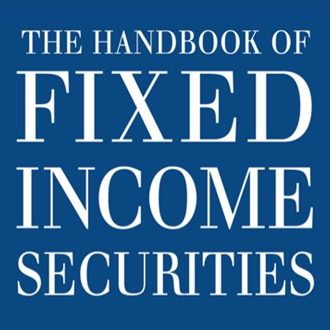Note: this cheat sheet is updated for the latest 2025’s curriculum.
Fixed Income is a central topic in finance, and it increases in importance (topic weight wise) as you advance to CFA Level 3. With so many key concepts to cover, we decided to create our Cheat Sheet series of articles, which focuses on one specific topic area for one specific CFA Level.
This cheat sheet is basically a CFA Level 1 Fixed Income notes and formula sheet. ☕ CFA Fixed Income is one of the more quantitatively intensive topics in the exams and getting your fixed income basics right would build you a good base for the subsequent levels as well.
More Cheat Sheets will be published and updated shorlty, sign up to our member’s list to be notified first.
By referring to the CFA Learning Outcome Statements (LOS), we prioritize and highlight the absolute key concepts and formula you need to know for each topic. With some topic-specific tips at the end too!
Use the Cheat Sheets during your practice sessions to refresh your memory on important concepts. Don’t forget to bookmark this page and revert back often as it’s a big topic to go through 🙂
Let’s go!
- CFA Level 1 Fixed Income: An Overview
- LM1-3: Fixed Income Features, Cash Flows and Types, Issuance and Trading
- LM4-5: Fixed Income Markets for Corporate and Government Issuers
- LM6-9: Fixed Income Valuation: Prices, Yields, Term Structure of Interest Rates
- LM10-13: Fixed Income Risk and Return
- LM14-16: Credit Risk and Analysis
- LM17-19: Securitization, Asset Backed Securities and Mortgage Backed Securities
- CFA Level 1 Fixed Income Tips
CFA Level 1 Fixed Income: An Overview

The Fixed Income CFA Level 1 topic area constitutes one of the largest segments of the broader capital market. It mostly covers any investments where investors are loaning the money for a fixed, scheduled repayment: hence the name ‘fixed income’.
For Level 1, Fixed Income is third largest topic (sharing the title with Equity Investments) after FSA and Ethics. It is crucial to get a solid foundation on fixed income fundamentals from Level 1 as its topic weight increases throughout the 3 levels.
CFA Level 1 Fixed Income’s topic weighting is 11%-14%, which means 20-25 questions of the 180 questions of CFA Level 1 exam is centered around this topic.
It is covered in 2025’s Topic 7 which contains 19 Learning Modules (LMs).
Here’s the summary of CFA Level 1 Fixed Income’s chapter readings:
This CFA topic area aims to introduce readers to fixed income basics, how they are priced and valued. The concepts discussed are especially important for those who aspire to be in Fixed Income Portfolio Management – credit, macro or otherwise.
Even for those who do not plan to pursue a career in Fixed Income, these topics will be an inalienable part of their skill repertoire. This is because the various markets are often related and great investors (e.g. Warren Buffet, Peter Lynch, George Soros) often possess knowledge of different kinds of markets – not just the market they are investing in.
In short, CFA Level 1 Fixed Income teaches you:
– about the various fixed income products available in the market and how these markets operate;
– how to price these securities: what are the risk factors to pricing a fixed income security and how to hedge any associated risks?
LM1-3: Fixed Income Features, Cash Flows and Types, Issuance and Trading

Types of bond covenants
Affirmative (positive)covenants are what bond issuers must do. Some examples:
- Make interest and principal repayments on time;
- Comply will all laws and regulations;
- Insure and maintain assets.
Negative (restrictive) covenants are what bond issues must not do. Some examples:
- Restrictions on debt: Limits on maximum acceptable leverage ratios and minimum acceptable interest coverage ratios.
- Negative pledges: No additional debt that is senior to existing debt can be issued.
- Restrictions on shareholder distributions: Restriction on how much money can be spent on dividends and share buy-backs.
- Restrictions on mergers and acquisitions.
Structure of a bond’s cashflows
- Bullet bonds: the entire principal amount of the bond is repaid at maturity.
- Amortizing (full or partial):
- A fully amortized bond is where periodic interest and equal principal repayments are made over the life of the bond, such that the bond is full repaid at maturity.
- A partially amortizing bond is one where only a small partial amount of principal is repaid over the bond’s life, with a bigger lump sum balloon payment made at maturity of the bond. In essence, it is a hybrid between a fully amortizing and a bullet bond.
- Sinking fund: issuer repays a specific portion of the principal amount every year throughout the bond’s life or after a specified date. A sinking fund arrangement has a lower credit risk but higher reinvestment risk for investors.
Bonds with contingency provisions
Callable bonds
A callable bond gives the issuer the right to redeem all or part of the bond before maturity.
This embedded option benefits the issuer as it protects the issuer when the interest rates drop (i.e. when it does, issuer can call/redeem the bond, and reissue a new bond at a lower rate).
To compensate investors of a higher reinvestment risk, issuers offer a higher yield for callable bonds.
Therefore, the price of callable bond (Vcallable bond) is always lower than the price of a straight (non-callable) bond because the call option adds value to an issuer.
Vcallable bond = Vnon-callable bond – Vcall option
Putable bonds
A putable bond gives the bondholder the right to sell the bond back to the issuer at a pre-determined price on a specified date(s).
This embedded option benefits the bondholder as it protects the bondholder when the interest rates rise (i.e. when it does, bond price falls, bondholder can sell the bond back to issuer at a pre-determind price, and reinvest their cash at a higher rate).
Putable bonds offer a lower yield and is worth more than a non-putable bond.
Vputable bond = Vnon-putable bond + Vput option
Convertible bonds
Convertible bonds gives the bondholder the right to exchange the bond for a specified number of common shares in issuing company.
With debt and equity features, convertible bonds provide benefits to both:
- Investors as they have the opportunity to convert it into equity and participate in further upsides if share price is rising, yet has downside protection if share prices are falling.
- Issuers as they have reduced interest expense since convertible bonds have lower yields, and if the debt is converted, there is no debt to repay. Can be a callable convertible too.
Contingent convertible bonds (CoCos) automatically converts to equity upon a pre-specified event.
- Conversion price = price per share at which bond can be converted to shares
- Conversion ratio = number of common shares each bond can be converted into
- Conversion value = current share price x conversion ratio
- Conversion premium = convertible bond’s price – conversion value
LM4-5: Fixed Income Markets for Corporate and Government Issuers

Banks’ short term funding alternatives
- Retail deposits: checking, saving and money market accounts
- Short term wholesale funds: central bank funds, interbank funds, certificates of deposit (CDs).
- Repurchase agreements (‘repos’): are sale and repurchase agreements, a type of collateralized loan.
- Repo: seller is borrowing funds from buyer and providing the security as collateral.
- Reverse repo: buyer is borrowing securities to cover a short position.
- Repo margin or haircut is the % difference in market value of security (collateral) vs. the loan amount. The amount of repo margin depends on quality of collateral, length of repo term, dealer’s credit risk, supply and demand of collateral.
- Repo rate is the annualized interest cost of the loan.
Repurchase agreements
Repurchase \space price=Price \space of \space bond \times \Bigg [1 + Repo \space rate \times \frac{Repo \space term \space (in \space days)}{No. \space of \space days \space in \space a \space year}\Bigg]Initial \space margin =\frac{Security \space price_0}{Purchase \space price_0}Haircut=\frac{Security \space price_0-Purchase \space price_0}{Security \space price_0}Variation \space margin = (Initial \space margin \times Purchase \space price_t) - Security \space price_t
LM6-9: Fixed Income Valuation: Prices, Yields, Term Structure of Interest Rates

Bond pricing with spot rates
PV=\frac{PMT}{(1+z_1)^1}+\frac{PMT}{(1+z_2)^2}+...+\frac{PMT+FV}{(1+z_N)^N}Yield to maturity (YTM) is the constant discount rate that equates the sum of present value of future cashflows to the current price of the bond. In this specific case, all the spot rates are the same: z1 = z2 = zN = r.
Par, discount and premium bonds
| Coupon rate vs Yield to Maturity (YTM) | Bond price |
|---|---|
| Coupon rate = YTM | Price = Par value |
| Coupon rate < YTM | Price < Par value, a discount |
| Coupon rate > YTM | Price > Par value, a premium |
Full price, flat price and accrued interest
- Full/dirty price = Flat/clean/quoted price + Accrued interest (AI)
\begin{align*}
PV^{full}&=PV^{flat} + AI=PV(1+r)^{\frac{t}{T}}
\\AI&= \frac{t}{T}\times PMT
\end{align*}- where t = number of days since last coupon payment,
- T = number of days in the coupon period (actual/actual for government bonds, 30/360 for corporate bonds),
- PMT = interest payment per period
Relationship between bond price, coupon rate, maturity, YTM
| Inverse effect | Bond price is inversely related to YTM, the higher the YTM the lower the price, and vice versa. |
| Convexity effect | Bond price is more sensitive to discount rate reduction than discount rate increases. |
| Coupon effect | If all else constant, bonds with lower coupon rates are more sensitive to discount rate changes. |
| Maturity effect | If all else constant, bonds with longer maturity are more sensitive to discount rate changes. |
Other yield measures
- Semi annual bond equivalent yield = yield per semi annual period x 2
- Current yield = annual cash coupon payment divided by bond price
- Yield to call (YTC) = rate of return on callable bond if bond is held until first call date.
- Yield to worst (YTW) = the lowest between all YTC and YTM scenarios.
Yield measures for fixed rate bonds
- G-spread = yield spread of a bond over the benchmark government bond yield
- I-spread = yield spread of a bond over the standard swap rate of same tenure and currency.
- Z-spread (zero volatility spread, or static spread) is the constant spread above benchmark government spot curve such that the present value of cash flows equals price of bond.
- Option-adjusted spread (OAS) = Z-spread – option value
- If it is a callable bond, the option benefits the issuer (as they can redeem the bond if interest rates goes down, i.e. bond price goes up), therefore option cost > 0, and OAS < Z spread for callable bonds.
- If it is a putable bond, the option benefits the bondholder (as they can sell the bond back to the issuer at a pre-agreed price if interest rates goes up, i.e. bond price goes down), therefore option cost < 0, and OAS > Z spread for putable bonds.
- A way to think about it is that the option cost is the additional yield that the issuer has to pay for the option.
- For a callable bond, the issuer buys the call option, so he has to pay for it with a higher yield; the option cost is positive.
- For a putable bond, the issuer sells the put option, so he is paid for it with a lower yield: the option cost is negative.
Yield measures for money market instruments
Discount rate (DR) basis
PV=FV \times \Big (1-\frac{Days}{Year}\times DR \Big)DR=\Big (\frac{Year}{Days} \times \frac{FV-PV}{FV}\Big)Add-on rate (AOR) basis
PV=\frac{FV}{\Big(1+\frac{Days}{Year} \times AOR\Big)}AOR=\Big(\frac{Year}{Days} \times \frac{FV-PV}{PV}\Big)The main difference between DR and AOR is that interest is included in the face value for DR, but it is added to the principal for AOR.
Implied forward rates (IFR)
Forward rate is an interest rate in the future. The Implied Forward Rate (IFR) can be calculated from n-period spot rates (zn):
(1+z_A)^A \times (1+IFR_{A,B-A})^{B-A}=(1+z_B)^BLM10-13: Fixed Income Risk and Return

Duration
Duration of a bond – expressed in years – shows the % change in bond price to a 1% change in interest rate. The higher the duration, the more sensitive the bond is to changes in interest rates.
Macaulay duration
Macaulay duration (MacDur) is a weighted average time it would take to receive all of a bond’s cashflow.
Modified duration
Modified duration (ModDur) is an estimated % price change for a bond given a change in its yield to maturity.
Modified \space duration=\frac{Macaulay \space duration}{1+r}Approximate modified duration
If Macaulay duration is unknown, annual modified duration can be estimated with:
ApproxModDur= \frac{(PV_-)-(PV_+)}{2 \times (\triangle Yield) \times (PV_0)}=\frac{ApproxMacDur}{1+r}Effective duration
Bonds with embedded option and MBS don’t have a well defined YTM as they may be prepaid before maturity.
Hence, effective duration may be a better measure for these instruments, as it measures the sensitivity of a bond price change to a change in benchmark yield curve (instead of its own YTM).
EffDur=\frac{(PV_-)-(PV_+)}{2 \times (\triangle Curve) \times (PV_0)}Key rate duration
Key rate duration measures a bond’s price sensitivity to a change in the shape of a benchmark yield curve for a given maturity.
This is used to assess yield curve risk, i.e. non-parallel shifts in yield curve.
Effect of bond’s maturity, coupon and yield on interest rate risk
| Change in a variable (all else constant) | Effect on bond duration |
|---|---|
| Higher coupon rate | Lower |
| Higher yield to maturity (YTM) | Lower |
| Longer time-to-maturity | Usually positively correlated with Macaulay and Modified duration: – Higher for premium and par value bonds. – Usually higher for discount bonds, except long term, low coupon bonds, where it is possible to have a lower duration on that vs. a comparable shorter term bond. |
Money duration
Money duration measures the price change in units of currency in which the bond is dominated, given a change in annual yield to maturity.
Money Duration = AnnModDur x PVfull
Price value of a basis point (PVBP)
PVBP estimates the change in the full price of the bond in response to 1 bp change in its YTM.
PVBP=\frac{(PV_-)-(PV_+)}{2}=Money \space duration \times 0.0001Convexity
Approximate convexity
ApproxCon=\frac{(PV_-)+(PV_+)-(2 \times PV_0)}{(\triangle Yield)^2 \times (PV_0)}The % change in a bond’s full price for a given change in yield with convexity-adjustment is:
\footnotesize \%\triangle PV^{full}=(-AnnModDur \times \triangle Yield)+(0.5 \times AnnConvexity \times (\triangle Yield)^2)Effective convexity
EffCon=\frac{(PV_-)+(PV_+)-(2 \times PV_0)}{(\triangle Curve)^2 \times (PV_0)}LM14-16: Credit Risk and Analysis

Credit risk
- 2 components of credit risk: default risk (or default probability) and loss severity (or loss given default).
- Expected loss = Default probability x Loss severity given default
- Loss severity = 1 – Recovery rate
- Return impact due to a change in credit spread (with convexity adjustment):
\small Return \space impact \approx -(ModDur \times \triangle Spread)+ 0.5(Convenxity + \triangle Spread^2)
Four C’s of credit analysis
| Capacity | Evaluate if the ability of borrower to make principal and interest payments over the debt term. |
| Collateral | Quality and value of the assets pledged as collateral. |
| Covenants | Terms and conditions that the issuer must comply with. |
| Character | Quality of management team, company’s financial history, whether there have been late payments or bankruptcy in the past. |
LM17-19: Securitization, Asset Backed Securities and Mortgage Backed Securities

Residential mortgage loans
This is a loan a buyer takes on to buy real estate (house, flat, land etc.) whereby the property bought is used as collateral.
Characteristics of residential mortgage loans:
| Maturity | Number of years to maturity varies by country. In US, it is typically 15-30 years. |
| Interest rate | A few types: fixed, adjustable (variable), initial period fixed rate, convertible. |
| Amortization schedule | Full, partial, interest only. |
| Prepayment | Prepayment is a payment made in excess of the scheduled amount of principal repayment. Some mortgages have prepayment penalty, some don’t. |
| Foreclosure | Recourse loans means in the event of default, lender can claim the shortfall (outstanding mortgage amount less sale proceeds from property) from the borrower. Most mortgages are non-recourse. In this case, lender cannot claim other assets from borrower if a shortfall occurs when borrower defaults. |
Collateralized debt obligations (CDOs)
- CDOs are securities backed by a diversified pool of one or more debt obligations, e.g. corporate bonds, bank loans, ABS, CMBS, RMBS, credit default swaps on securities.
- Structured as senior, mezzanine and subordinated/equity tranches with varying risk/return expectations.
- Unlike an ABS, a CDO requires a collateral manager to actively buy and sell debt obligations to generate sufficient cashflow to meet CDO obligations, as well as a an excess spread to pay equity holders and CDO management fees.
- If there are defaults in the underlying assets, there is a risk that investors in the subordinated/equity tranche will lose their original investment, and insufficient cashflow to pay the interest of senior/mezzanine tranche bondholders.
Residential mortgage-backed securities (RMBS)
- Agency RMBS – which are government or quasi-government guaranteed – must have conforming loans.
- Non-agency RMBS are issued by private entities and may have non-conforming loans. Requires credit enhancements to reduce credit risk.
Mortgage pass-through securities
Mortgage pass-through securities are created when shares or participation certificates are sold in a pool of mortgage loans.
| Pass-through rate | This is the coupon rate on the MBS, which takes into account the annual servicing fee. |
| Prepayment risks | Risk due to uncertain future cash flows due to principal repayment. This has 2 components: 1) Contraction risk: Risk of faster than expected prepayments due to interest rate decline. Borrowers are more inclined to prepay in full and refinance at the lower rate. 2) Extension risk: Risk of slower than expected prepayments due to interest rate increase. Borrowers are less inclined to prepay and mortgage maturity will increase. |
2 measures of prepayment rate are:
a) Single monthly mortality rate (SMM) is a monthly measure of prepayment rate.
\scriptsize SMM=\frac{Prepayments \space in \space month \space t}{Starting \space mortgage \space balance \space for \space month \space t - Scheduled \space principal \space repayments \space for \space month \space t}b) Conditional repayment rate (CPR) is an annualized version of SMM.
Collateralized mortgage obligations (CMOs)
CMOs are securities backed by a pool of mortgage pass-through securities, structured with tranches of varying exposures to prepayment risks.
Types of CMO tranches:
| Sequential-pay tranches | A CMO where each tranche of bond is paid (in full) sequentially. Shorter term tranches have contraction risk, longer term tranches have extension risk. |
| Planned amortization class (PAC) tranches | PAC CMOs provide more predictable cash flows as it specifies a certain band of prepayment rate, as excesses beyond the band is absorbed by support tranches. |
| Support tranches | Non-PAC tranches (i.e. support tranches) provide protection from both contraction and extension risks of PAC CMOs by absorbing excess principal payment repaid, or forgoing principal payment if collateral payments are slow. |
Commercial mortgage-backed securities (CMBS)
- CMBS are backed by a pool of non-recourse, commercial mortgage loans on income-producing properties.
- Interest on principal outstanding is paid to all tranches.
- Highest rated bonds are paid off first, losses from loan defaults are charged against the principal of the lowest rated CMBS tranche, i.e. residual/equity tranche.
- CMBS investors have significant call protection (prepayment risk protection) incorporated within the CMBS structure, but experience balloon risk (a type of extension risk) since most of the underlying loan assets of CMBS are balloon loans that require substantial principal repayments at maturity.
CFA Level 1 Fixed Income Tips

Cover the Fixed Income topic early in your studies
If you are quantitatively inclined, I suggest you do look at this topic early in your CFA studies. However, it is useful to first familiarize yourself with the concepts of Time Value of Money and the Discounted Cash flow approach.
In fact, we have a detailed recommended CFA Level 1 study topic order that covers all these points to maximize your study efficiency.
What study materials should I use?
This depends wholly on where you currently stand:
- If you come with a background in Fixed Income, it will be like a fish taking to water.
- If you are new to finance, certain concepts can be very alien.
I would recommend using prep provider notes – you can see what’s on offer here. If you find some of the concepts hard to get, move up a notch and consult the CFA Institute curriculum, which is useful for occasional deep-dives but may be too dry and lengthy to function well as your main study material.
If you’d like more reading material, I recommend getting Frank J Fabozzi’s Handbook of Fixed Income Securities.
What is it? The Handbook of Fixed Income Securities has been the most trusted resource in the world for fixed income investing for decades.
About the Author: Frank J. Fabozzi is professor of finance at EDHEC Business School, a member of the EDHEC Risk Institute and on the board of BlackRock.
Master your calculator for this topic
If you want to ace this section (and you do), your CFA calculator is your best friend.
Fixed Income Investments is a topic area that is especially calculator-heavy, and CFA exam calculations are not your regular multiplications and divisions that you can do using a paper and a pen.
So you’ll need to know your calculator’s functions and operations like the back of your hand. Practice regularly with practice exams and given examples, and consider having a look at our calculator guides for extra handy tips:
- The 300Hours’ Guide to the Texas Instruments BA II Plus Calculator
- The Ultimate List of BA II Plus Calculator Tips for the CFA Exams
What do I do to practice?
As the saying goes – practice makes perfect. It is not different with this topic.
If you are new to finance and Fixed Income, make sure you go through enough numerical problems before you sit for the actual exam from study notes.
Then try and attempt the questions that you may find in the CFA Institute’s curriculum. Finally, attempt your practice exams, and that should form a pretty solid preparation.
More Cheat Sheet articles will be continuously updated and published. Get ahead of other CFA candidates by signing up to our member’s list to get notified.
Meanwhile, here are other related articles that may be of interest:
- CFA Level 1 Cheat Sheets series: Quant Methods | Economics | Corporate Issuers | Derivatives | FSA | Equity Investments | Ethics | Alt Investments | Portfolio Management
- CFA Level 1: How to Prepare and Pass CFA in 18 Months
- CFA Level 1 Tips: Top 10 Advice from Previous Candidates
- 18 Actionable Ways to Improve Your Study Memory
- How to Study Effectively: Proven Methods that Work for CFA, FRM and CAIA
- The Ultimate Guide to CFA Practice Questions


Great efforts, keep it up!
Hi, I think the return impact formula is incorrect.
Rather than: Return impact≈−(ModDur×△Spread)+0.5(Convexity+△Spread^2 )
It should be Return impact≈−(ModDur×△Spread)+0.5(Convexity x△Spread 2 )
Do you have a guide and Ultimate List of Tips for the hp12c?
Here it is! https://300hours.com/how-to-use-hp12c/
Do you publish cheat sheets for Level 2 curriculum?
We are planning this soon – stay tuned!
Nice
Nice
Nice